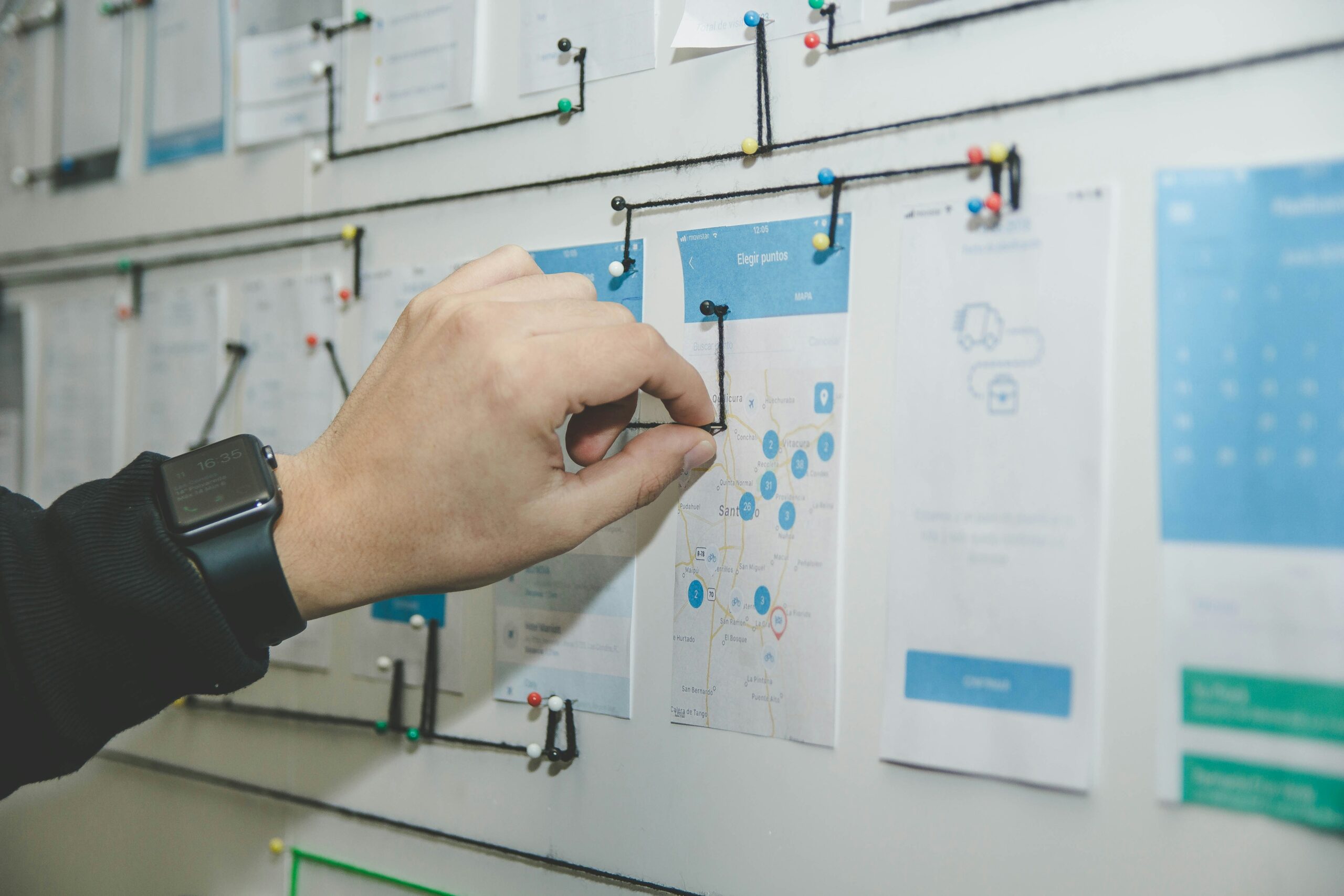Ready to embark on an exciting adventure? In this article, we will explore the fascinating world of escape rooms and discover the secrets to constructing a captivating experience. Step into the shoes of a master puzzle creator as we delve into the intricacies of how you can expertly structure an escape room. From designing immersive narratives to strategically placing clues, get ready to unlock the keys to creating an unforgettable escape room that will challenge and captivate participants. So, grab your thinking cap and let’s unlock the secrets of escape room design!
Theme and Storyline
Choose a theme
When structuring an escape room, the first step is to choose a theme that will engage and captivate the players. Consider popular themes like heists, haunted houses, or archaeological adventures. Selecting a theme that resonates with your target audience and offers a unique and immersive experience is key.
Develop a storyline
Once you have chosen a theme, it’s essential to develop a compelling storyline. The storyline sets the context and motivation for the players’ escape mission. Whether it’s a race against time to find a hidden treasure or a quest to solve a mysterious murder, a well-crafted storyline adds depth and intrigue to the overall experience.
Create a narrative flow
To enhance the immersion and engagement, make sure the escape room has a clear narrative flow. This means structuring the puzzles, challenges, and clues in a way that allows the players to progress logically through the storyline. Each puzzle should contribute to the overall narrative and create a sense of progression as the players unravel the mystery or overcome obstacles.
Room Design
Layout and size
Consider the layout and size of the physical space when designing your escape room. The room should be spacious enough to accommodate the players comfortably, allowing them to move around and interact with the environment. Additionally, the layout should support the flow of the storyline and ensure that puzzles and challenges are effectively distributed throughout the space.
Furniture and props
Carefully select furniture and props that align with the chosen theme and enhance the player’s immersion. Props should be authentic, visually appealing, and functional. They should also provide clues and hidden compartments that players can discover and utilize during their escape mission. Attention to detail in the design of the room’s furnishings and props can truly elevate the overall experience.
Lighting and ambiance
Lighting and ambiance play a crucial role in setting the mood and atmosphere within the escape room. Use a combination of dim lighting, strategic spotlights, and atmospheric elements like music or sound effects to create an immersive and suspenseful environment. Balancing the level of darkness and visibility is essential, as too much darkness can hinder progress, while too much light can make puzzles too obvious.

Puzzles and Challenges
Select puzzle types
In order to structure the escape room effectively, it’s important to choose a variety of puzzle types. From riddles and ciphers to physical challenges and pattern recognition, offering a diverse range of puzzles ensures that different players can showcase their strengths and contribute to the team effort. Incorporate puzzles that require collaboration, logical thinking, creativity, and problem-solving skills.
Create logical connections
To maintain the narrative flow, it’s crucial to create logical connections between the puzzles and challenges. Each puzzle should provide a clue or solution that leads to the next step in the storyline. Avoid including random or unrelated puzzles that may confuse or frustrate players. Ensure that the puzzles follow a clear sequence and build upon each other to maintain a cohesive and engaging experience.
Vary difficulty levels
Consider the skill levels and preferences of your target audience when designing the puzzles. Vary the difficulty levels to accommodate both novice and experienced players. This allows everyone to participate and feel challenged throughout the game. Incorporate some simpler puzzles to build confidence and momentum, while also including more complex challenges to provide a sense of accomplishment upon completion.
Clues and Hint System
Decide on clue delivery methods
Clue delivery is an important aspect of structuring an escape room. Determine how clues will be provided to the players. Common methods include hidden messages, audio or visual cues, or physical objects that reveal hints when discovered. The method of clue delivery should be linked to the theme and storyline to maintain immersion.
Balance difficulty and guidance
When structuring an escape room, it’s crucial to strike a balance between challenge and guidance. Clues should offer assistance without giving away the solution completely. Gradually increasing the level of guidance as time progresses or providing additional clues for struggling teams can help maintain momentum and avoid players feeling stuck or frustrated.
Offer optional hints
To cater to a wide range of player abilities and preferences, offer optional hints within the escape room. Some players may prefer a more challenging experience and may choose to forgo hints altogether, while others may appreciate having some guidance along the way. Providing optional hints ensures that players can customize their experience based on their desired level of difficulty.

Flow and Progression
Establish a linear or non-linear structure
When designing the flow and progression of the escape room, consider whether you want to establish a linear or non-linear structure. In a linear structure, players must solve puzzles in a particular order to progress through the game. In a non-linear structure, multiple puzzles can be tackled simultaneously, allowing players to divide and conquer. Both structures have their merits, and the choice should align with the theme and narrative.
Control the pacing
To maintain an engaging experience, it’s essential to control the pacing of the escape room. Create moments of suspense, excitement, and discovery by strategically placing high-intensity puzzles and challenges. However, be mindful not to overwhelm the players with an excessive number of difficult tasks in quick succession. Carefully consider the timing and placement of each puzzle to keep the players engaged and motivated throughout.
Ensure logical progression
Logical progression is crucial to the overall structure of an escape room. Ensure that each step, clue, or puzzle solution leads seamlessly to the next, creating a coherent and meaningful progression. Avoid introducing unnecessary detours or dead ends that may confuse or frustrate players. A clear and logical progression maintains the sense of immersion and satisfaction as players work their way through the challenges.
Physical and Mechanical Elements
Integrate technology
Integrating technology into the escape room can enhance the overall experience. Use sensors, interactive displays, or programmed electronics to create dynamic elements within the room. For example, triggering a hidden compartment to unlock when the correct code is entered on a digital keypad can bring an additional layer of excitement and interactivity to the game.
Incorporate hidden compartments
Hidden compartments add an element of surprise and discovery to the escape room. Design furniture or props with secret compartments that can be unlocked or revealed through solving puzzles. These hidden compartments can contain valuable clues or additional tools needed to progress further, adding depth to the gameplay and rewarding the players’ efforts.
Include interactive objects
Make the escape room environment interactive by incorporating objects that respond to player actions. For example, pressing a particular button or pulling a lever could trigger a secret door to open or a mechanism to activate. Integrating interactive elements immerses the players further into the narrative and encourages them to interact with their surroundings.

Gameplay Duration
Determine ideal length
Consider the ideal duration for the escape room experience when structuring the game. Strive for a length that provides enough time for players to engage with the puzzles and challenges without feeling rushed or bored. A typical duration for an escape room is around 60 minutes, but this can vary depending on the complexity of the game and the preferences of your target audience.
Consider time limits
Introducing time limits can add an element of urgency and excitement to the escape room experience. Setting a countdown timer can create a sense of pressure and challenge the players to work efficiently. However, ensure the time limit allows players a reasonable opportunity to solve the puzzles and progress through the storyline without feeling overwhelmed.
Balance between challenging and achievable
When determining the gameplay duration, it’s crucial to strike a balance between challenging and achievable objectives. The puzzles and challenges should be difficult enough to provide a sense of accomplishment when solved, but not so challenging that they become frustrating or unsolvable. Consider providing opportunities for players to feel successful along the way, while still offering a final challenge that requires their full effort and teamwork.
Player Safety and Accessibility
Ensure safety measures
Prioritize player safety when designing the escape room. Ensure that all elements, furniture, and props are safe and free from any hazards or potential dangers. Regularly inspect the room to identify and address any potential risks. Additionally, provide clear instructions on safety protocols and emergency procedures to ensure that players feel secure and can enjoy the game without concerns.
Account for physical limitations
To make the escape room accessible to a wider range of players, account for physical limitations. Ensure that the room design and puzzles can be completed by individuals with different abilities and mobility levels. Consider providing alternative methods or variations for puzzles that may require physical strength or dexterity, allowing all players to fully participate and engage in the gameplay.
Provide alternative solutions
In the spirit of inclusivity, provide alternative solutions for players who may struggle with certain puzzles or challenges. This can involve offering different paths to progress or providing additional clues or hints if requested. By accommodating diverse player abilities and approaches, you create an environment where everyone can enjoy the escape room experience regardless of their individual strengths or limitations.

Testing and Refinement
Conduct playtests
Before finalizing the structure of the escape room, conduct thorough playtests to evaluate the gameplay flow, puzzle difficulty, and overall player experience. Involve a diverse group of testers who can provide valuable feedback and insights. Observe their progress, listen to their suggestions, and note any areas that may require refinement or improvement.
Evaluate feedback
After each playtest, evaluate the feedback received from the testers. Look for common themes or recurring issues that may need to be addressed. Consider the playtesters’ perspectives and experiences to gain a better understanding of how the escape room can be improved. Use this feedback as a guide to refine the structure, puzzles, and overall design of the room.
Make necessary adjustments
Based on the feedback and evaluation, make the necessary adjustments to improve the escape room structure. This may involve redesigning puzzles, reconfiguring the flow of the narrative, or modifying the timing and intensity of certain elements. Continuously iterate and refine the structure through multiple playtests until you achieve a well-balanced and engaging escape room experience.
Teamwork and Cooperation
Encourage collaborative gameplay
Escape rooms are designed to be enjoyed as a team, so encourage collaborative gameplay throughout the experience. Structure the puzzles and challenges in a way that requires cooperation and communication among team members. Design tasks that cannot be completed by a single individual, fostering a sense of unity and encouraging players to work together to achieve their common goal.
Design multiple roles
To promote engagement among team members, design the escape room with multiple roles or responsibilities. Assign specific tasks or puzzles to each player, ensuring that everyone has a role to play and contributes to the team’s success. This not only encourages active involvement but also allows each player to showcase their unique strengths and problem-solving abilities.
Foster communication
Communication is vital in an escape room, so create opportunities for players to effectively exchange information and ideas. Incorporate puzzles or challenges that require players to share discoveries, pass on clues, or solve tasks collectively. Providing platforms for effective communication, such as whiteboards or walkie-talkies, enhances teamwork and ensures that everyone is involved in the gameplay.
By following these guidelines and considering each aspect of escape room design, you can structure an immersive and engaging experience that challenges and delights your players. From selecting an intriguing theme to fostering teamwork and cooperation, every element contributes to the overall success of the escape room. Remember to continuously refine and iterate through playtesting and feedback, ensuring that your escape room provides an unforgettable adventure for all who dare to enter.
